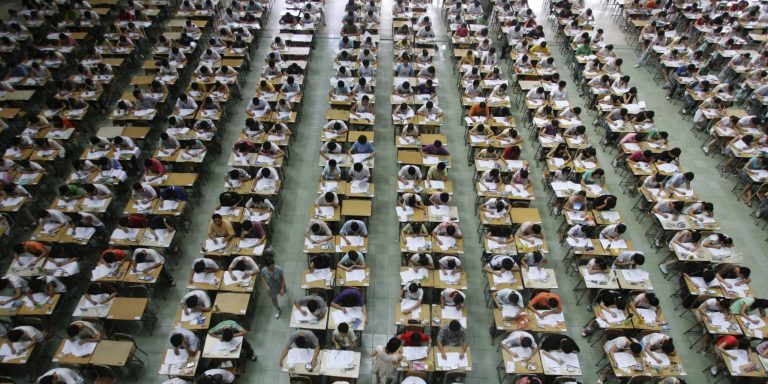
Think you know exam stress? Spare a thought for the nine million or so Chinese high school students awaiting the results of the gaokao: the gruelling college entrance exams that can mean the difference between a prized university education and – in the eyes of some Chinese parents – failure.
Held each June, the gaokao (which is short for ‘The National Higher Education Entrance Examination’) has come under fire in recent years for encouraging rote learning and piling undue pressure on students and teachers alike. Critics say this hothouse atmosphere can lead to depression, anxiety and even suicidal behaviour among China’s high-schoolers. In 2012, photos emerged of students toiling in a so-called ‘gaokao sweatshop’, hooked up to amino acid drips suspended from the ceiling in an effort to get them through marathon ‘cramming’ sessions.
Meanwhile, a flourishing black market has emerged to cater to the less scrupulous. Fraudsters use an arsenal of illicit gadgets – including watches with built-in radio transmitters, eyeglasses with concealed cameras, and hidden earpieces – to relay the correct answers to their clients in exchange for cash, while the answers themselves are often obtained by hacking into exam board servers. As a result, educational authorities in some areas have resorted to using drones to monitor examination halls and detect suspicious radio signals.
In light of all this, it’s perhaps not surprising that a growing number of China’s private schools are offering equivalent Western qualifications such as the International Baccalaureate, British-style A-levels and American SATs. Proponents say these courses offer a more rounded education than the gaokao system, which is heavily skewed towards STEM subjects (science, technology, engineering and mathematics) and makes little allowance for arts and humanities.
Crucially, they also pave the way to undergraduate study at a Western university – an enticing prospect to a burgeoning middle class grown weary of ‘gaokao fever’ and underfunded domestic colleges.
China’s Ministry of Education says some 459,800 students studied abroad last year, an increase of 11% from 2013. Roughly half of these opted for the United States, where according to the US-based Institute of International Education, Chinese nationals made up 31% of all international students in the 2013/2014 academic year – and with more and more Chinese parents able to afford the hefty price tag that Western pre-college courses invariably carry, the trend looks set to continue into 2015 and beyond.







